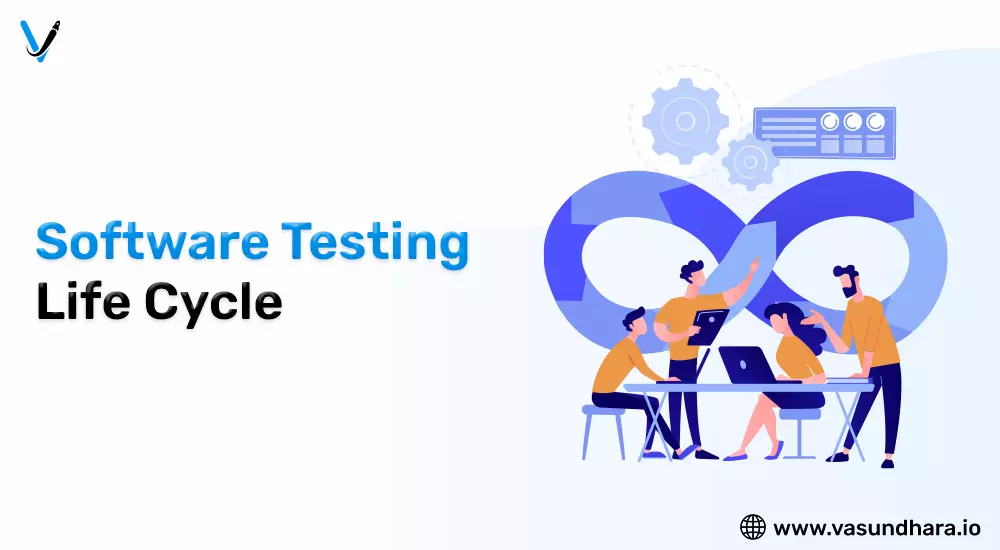Introduction To Software Testing Life Cycle


- Jun 30, 2022




Steps
Every IT company is working hard on the development of their products and software. But before launching the product into the market, the testing team check the application once, and if no issues were found, it was ready to deliver.
Sometimes applications do not work properly and take a lot of time for bug fixing and other issues. It happens because of a lack of knowledge in testing. Therefore, learn the complete process of software testing. Take a look.
Software testing not only validates the manufactured product, instead it contains a set of activities executed in the software development life cycle(SDLC). Software testing life cycle or STLC refers to all these activities performed during the testing of the software products.

At this stage, documents of requirements are analyzed and verified. Along with this, the scope of testing has been defined.
First step of QA is involved in the STLC which helps to prevent the introduction of defects into software under test. The requirements can be either Functional or Non-Functional like Performance testing, Security testing. In this phase, CRS (Customer Requirement Specification) document was created.
Test planning is the most important activity in the test process. It involves defining the test specifications to achieve the project's requirements. Whereas, continuous monitoring of the progress of testing with the plan set in the test control and inclusion of any deviation for the stakeholders concerned.
In this phase typically test manager is involved in determining the effort and cost estimates for the entire project. This phase will be performed after the requirement gathering phase is completed. Based on the requirement analysis document, start preparing the test plan.
Test analysis is the process of looking at something that can be used to derive test information. This basis for the tests is called the test basis. This phase involves analyzing the document of requirement gathering, risk analysis report, and design specification. Also analyze the pre-test conditions, test techniques.
Following Is The Document Which Is Used In Test Analysis:-
CRS (Customer Requirement Specification)
SRS (Software Requirement Specification)
BRS (Business Requirement Specification)
Functional Design Documents
This phase starts after the test planning and analysis phase is completed. From the test analysis, we can understand how to test and what is the condition of the test. So easily understand and develop the test case.
In this phase tester creates the manual/automation test scripts. The test data is prepared in this phase that which data is used to find the defect. The Requirement Traceability Matrix (RTM) is also prepared, because of tester understands to track the test case for the particular requirement.

In this phase analyzes the software and hardware resources which is required in test case execution and set up all the required resources. This phase is required to set up the environment to execute the test case. This phase is work parallelly with the test case development phase. In this phase, the tester prepares the smoke test script and perform to check the test environment setup is ready for testing or not.
After the test plan, test case development and test environment setup are complete then the test execution phase is performed. In this phase manual/automation test script is executed.
If any defect is found during test case execution then it will report to the developer by the bug tracking system. If any test case result is failed then that particular test case is marked as Fail. If any test case result is matched with the expected result then the particular test case is marked as Pass.
If any depending modules are tested and any defect is found then the particular module test case is marked as blocked, first fix the main module defect and then execute the test case of the related module.
For example, the B module is dependent on module A. If any defect is found in module A then the B module test case is not executed. First fix the defect of module A then re-execute the module A test case, if module A test case result is passed then perform module B test case execution.
Blocked remarked test cases are executed after the defect is fixed by the developer.

In this phase if exit criteria are matched with test case result. In exit criteria, there is some condition that is pre-defined. The test summary report is generated in this phase.
A document that contains a summary of test activities and final test results in its called Test Summary Report.
In this phase test closure and test metrics report is generated. In this phase testing team members arrange the meeting and discuss on bug report and test case and divide the defect by severity and priority.
In this phase also check that the test plan, test case, the requirement is archiving or not.
There are different activities in the testing process. And each of them is explained in this blog for you.
Once the testing team gives you a green signal after the development of a product or software, it is ready to be delivered to the market. Hence, learn the testing process that will help your business deliver the best products in the market.
Copyright © 2026 Vasundhara Infotech. All Rights Reserved.